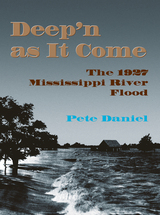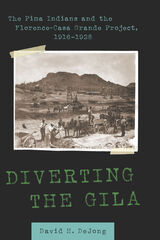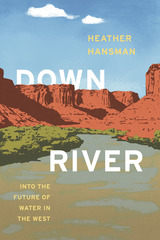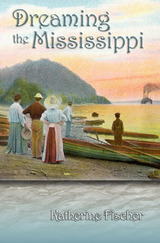6 start with D start with D

The politics of building dams and levees and other structures are just part of the policies determining how American rivers are managed or mismanaged. America's well-being depends upon the health of those rivers and important decisions go beyond just dam-building or dam removal. American rivers are suffering from poor water quality, altered flows, and diminished natural habitat. Current efforts by policymakers to change the ways American rivers are managed range from the removal of dams to the simulation of seasonal flows to the restoration of habitat, all with varying degrees of success.
Efforts to restore American rivers are clearly delineated by William Lowry in Dam Politics as he looks at how public policy and rivers interact, examines the physical differences in rivers that affect policies, and analyzes the political differences among the groups that use them. He argues that we are indeed moving into an era of restoration (defined in part as removing dams but also as restoring the water quality, seasonal flows, and natural habitat that existed before structural changes to the rivers), and seeks to understand the political circumstances that affect the degree of restoration.
Lowry presents case studies of eight river restoration efforts, including dam removals on the Neuse and Kennebec rivers, simulation of seasonal flows on the Colorado river, and the failed attempt to restore salmon runs on the Snake river. He develops a typology of four different kinds of possible change—dependent on the parties involved and the physical complexity of the river—and then examines the cases using natural historical material along with dozens of interviews with key policymakers. Policy approaches such as conjunctive water management, adaptive management, alternative licensing processes, and water marketing are presented as possible ways of using our rivers more wisely.
Dam Politics provides a useful and systematic account of how American waterways are managed and how current policies are changing. American rivers are literally the lifeblood of our nation. Lowry has written a lively and accessible book that makes it clear as a mountain stream that it matters deeply how those rivers are managed.

Daniel weaves his narrative with newspaper and firsthand accounts, interviews and survivors, official reports, and over 140 contemporary photographs. The story of the common refugee who suffered most of the effects of the flood emerges alongside the details of the massive rescue and relief operation—one of the largest ever mounted in the United States. The title, Deep’n as It Come, is a phrase from Cora Lee Campbell’s early description of he approaching water, which, Daniel writes, “moved at a pace of some fourteen miles per day,” and in its movement and sound, “had the eeriness of a full eclipse of t he sun, unsettling, chilling.”
“The contradictions of sorrow and humor. . . death and salvation, despair and hope, calm and panic—all reveal the human dimension” in this compassionate and unforgettable portrait of common people confronting a great natural disaster.

The rapidly disappearing wetlands that once spread so abundantly across the American continent serve an essential and irreplaceable ecological function. Yet for centuries, Americans have viewed them with disdain. Beginning with the first European settlers, we have thought of them as sinkholes of disease and death, as landscapes that were worse than useless unless they could be drained, filled, paved or otherwise "improved." As neither dry land, which can be owned and controlled by individuals, nor bodies of water, which are considered a public resource, wetlands have in recent years been at the center of controversy over issues of environmental protection and property rights.
The confusion and contention that surround wetland issues today are the products of a long and convoluted history. In Discovering the Unknown Landscape, Anne Vileisis presents a fascinating look at that history, exploring how Americans have thought about and used wetlands from Colonial times through the present day. She discusses the many factors that influence patterns of land use -- ideology, economics, law, perception, art -- and examines the complicated interactions among those factors that have resulted in our contemporary landscape. As well as chronicling the march of destruction, she considers our seemingly contradictory tradition of appreciating wetlands: artistic and literary representations, conservation during the Progressive Era, and recent legislation aimed at slowing or stopping losses.
Discovering the Unknown Landscape is an intriguing synthesis of social and environmental history, and a valuable examination of how cultural attitudes shape the physical world that surrounds us. It provides important context to current debates, and clearly illustrates the stark contrast between centuries of beliefs and policies and recent attempts to turn those longstanding beliefs and policies around. Vileisis's clear and engaging prose provides a new and compelling understanding of modern-day environmental conflicts.

Diverting the Gila explores the complex web of tension, distrust, and political maneuvering to divide and divert the scarce waters of the Gila River. Residents of Florence, Casa Grande, and the Pima Reservation fought for vital access to water rights. Into this political foray stepped Arizona’s freshman congressman Carl Hayden, who not only united the farming communities but also used Pima water deprivation to the advantage of Florence-Casa Grande and Upper Gila Valley growers. The result was the federal Florence-Casa Grande Project that, as legislated, was intended to benefit Pima growers on the Gila River Indian Reservation first and foremost. As was often the case in the West, well-heeled, nontribal political interests manipulated the laws at the expense of the Indigenous community.
Diverting the Gila is the sequel to David H. DeJong’s 2009 Stealing the Gila, and it continues to tell the story of the forerunner to the San Carlos Irrigation Project and the Gila River Indian Community’s struggle to regain access to their water.

The Green River, the most significant tributary of the Colorado River, runs 730 miles from the glaciers of Wyoming to the desert canyons of Utah. Over its course, it meanders through ranches, cities, national parks, endangered fish habitats, and some of the most significant natural gas fields in the country, as it provides water for 33 million people. Stopped up by dams, slaked off by irrigation, and dried up by cities, the Green is crucial, overused, and at-risk, now more than ever.
Fights over the river’s water, and what’s going to happen to it in the future, are longstanding, intractable, and only getting worse as the West gets hotter and drier and more people depend on the river with each passing year. As a former raft guide and an environmental reporter, Heather Hansman knew these fights were happening, but she felt driven to see them from a different perspective—from the river itself. So she set out on a journey, in a one-person inflatable pack raft, to paddle the river from source to confluence and see what the experience might teach her. Mixing lyrical accounts of quiet paddling through breathtaking beauty with nights spent camping solo and lively discussions with farmers, city officials, and other people met along the way, Downriver is the story of that journey, a foray into the present—and future—of water in the West.

READERS
Browse our collection.
PUBLISHERS
See BiblioVault's publisher services.
STUDENT SERVICES
Files for college accessibility offices.
UChicago Accessibility Resources
home | accessibility | search | about | contact us
BiblioVault ® 2001 - 2024
The University of Chicago Press









